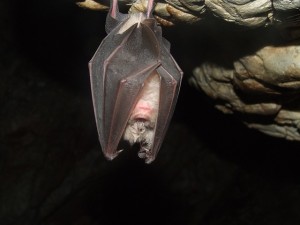
According to the Chicago Tribune, the amount of bats that have tested positive for rabies in Illinois is doubled comparatively to last year. Last year at this point, there were eight positive rabies tests. Currently there are 16. Though these numbers are small and it is early in the season, it could be indicative of a trend this year.
Bats are found everywhere in the state, including the Chicagoland area. Rabid bats have been found in homes in Arlington Heights, Aurora, LaGrange, and Chicago’s south side. The family from Arlington Heights is pursuing rabies vaccinations. Most rabid bats found last year were in Cook and Will counties. Will county had a record setting 20 cases of bat rabies.
Several species of bat are found in Illinois. Big brown bats and small brown bats are quite common, even in urban areas. Officials say that bats are common transmitters of rabies because they are often in contact with humans. Bats can also transmit rabies to other mammals like dogs, foxes, skunks, and raccoons.
To avoid catching rabies, it’s advised to avoid contact with wild animals including stray cats and dogs. Especially avoid animals that are typically nocturnal but may be acting strangely during daylight hours. Do not leave food outside that may attract wild animals. Seal off any entry points to your home, or other buildings like sheds and garages, that wild animals may enter. Bats can enter through small entry pints near windows, attics, soffits, and spaces in your home’s siding. Keep your family pets’ vaccines up to date and do not let them roam without supervision.
If you believe a rabid animal has bitten you, seek medical attention immediately. If there are animal pests on your property or in your home, call pest control to have them safely removed.






 You may not realize it, but there are actually 12 different species of bats that regularly occur in Illinois. Don’t be alarmed; all of the bats who call Illinois home are insectivorous, which means they only hunt insects. Bats are small, winged mammals, who usually weigh no more than a few ounces. Their heads and bodies are covered with fur and their wings have hairless membranes connecting them to the hind legs, body, and forelimbs. Bats are also quite intelligent creatures. Some of the bat species inherent to Illinois include:
You may not realize it, but there are actually 12 different species of bats that regularly occur in Illinois. Don’t be alarmed; all of the bats who call Illinois home are insectivorous, which means they only hunt insects. Bats are small, winged mammals, who usually weigh no more than a few ounces. Their heads and bodies are covered with fur and their wings have hairless membranes connecting them to the hind legs, body, and forelimbs. Bats are also quite intelligent creatures. Some of the bat species inherent to Illinois include: